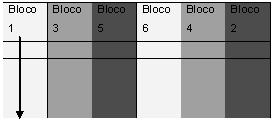Coordinator:
Dra. Ana Y. Harada • Emílio Goeldi Museum of Pará (e-mail: ahara@museu-goeldi.br)
Protocol researchers:
East Pará - Dra. Ana Y. Harada (MPEG)
Maranhão - Dr. Francisco Limeira de Oliveira (UEMA)
Groups of interest and diversity of species estimated:
Spiders from the ground-dwelling Dionycha group (Corinnidae, Liocranidae, Gnaphosidae, Prodidomidae, Clubionidae, Oonopidae, Salticidae, Sparassidae, Zoridae): 80 to 120 different species in the Amazon.
Ants (Formicidae family) found on the forest floor and in the soil (Agroecomyrmecinae, Cerapachyinae, Dolichoderinae, Ectatomminae, Formicinae, Myrmicinae, Ponerinae, Proceratiinae): 100 to 350 different species in the Amazon.
Biological role:
Studies into energy flow and the movement of materials within the trophic levels of the food chain indicate that spiders are a major component of the predator fauna, being responsible for the capture of a large proportion of insect populations (Wise, 1993). A number of spider inventories have already been carried out using standardized collection protocols, allowing additional sample effort measures, statistical analyses and testing methods for calculating the wealth of species to be carried out (BARREIROS, 2004; RICETTI, 2005).
Forest floor and soil ants are responsible for a significant portion of nutrient recycling and aeration of soil surface layers, affecting the abundance and distribution of numerous animal and vegetable organisms through competition and predation, and by being actively involved in the aeration and fertilization of the soil, acting in a sense, as ecosystem engineers. They also have a significant impact on the predation and dispersion of seeds, as well as on the structure of the invertebrate community as a whole.
Collection Technique. Winkler Extractors
Areas of one square meter (1 m2) are set out with the aid of four wooden rulers, each of a single meter in length. The forest floor material and the surface layer of soil for each area are sifted within a concentrator (Figure 1). The resulting particulate material and varying organisms are separated by use of a Winkler extractor (Figure 2) over a period of three days. This method is efficient for the sampling of various types of invertebrates (FISHER, 1999).

Sampling Unit: The group of animals obtained through exposure to the Winkler extractor over a period of three days, taken from a single square meter of sifted forest floor material.
Sampling design: Three square meters of sifted forest floor material will be used for each plot in question. The sampling points will be distributed in the plot used for protocol 15, set out for the study of trees, DBH > 10cm, located (between 5 and 6 meters from the end of the trail) and to the right-hand side of the trail. The exit points of the trails within the plots for the three sampling points will be located at 10, 110 and 210 meters from the start point of the plot situated within the trail, these distances being measured by following the trail along this plot of land. The entire grid (divided into 30 separate plots) will be sampled, totalling 90 samples per expedition. The samples will be obtained within six blocks of five sub-plots within each grid, enabling 15 samples to be collected every three days. The samples will always be taken in the morning (between 6 and 11 a.m.). The blocks will be sampled on an alternate basis, each block corresponding to a specific column on the grid, as shown in the following diagram.

Figura 3. Layout of the blocks within the sub-plots.
Environmental variables: The depth of the forest floor material will be measured at two points along one square meter of sampled land with the aid of a rod graduated in centimeters. The volume of required material will be taken in the field, compressing the floor material found within a single square meter into an adjacent bucket, graduated in millimeters, sifted afterwards at the laboratory in a beaker (also graduated in millimeters), then being transferred for further exposure to a Winkler extractor. Other variables, such as air humidity, air temperature, rainfall and soil classification, may be used, as appropriate and depending on availability, for each plot in question.
Settling and preservation of material: The biological material will be settled and preserved in 75-80% alcohol. The collected samples will be deposited in INPA, MPEG and other trustworthy Amazon depository collections.
Restrictions on activities that could prejudice protocol development: Collection points must be established in the defined transects for botanical studies in order to optimize the correlation of data containing biotic and abiotic variables; a choice that could possibly raise objections. In the event that it is not possible to carry out collections within the referred to transects, the collections must be made within each plot, but within adjacent transects.
References:
BARREIROS, J.A.P. Inventário da araneofauna (Arachnida, Araneae) de serapilheira na Estação Científica Ferreira Penna, Pará, Brasil. 2004. Dissertação (Mestrado) – Programa de Pós-Graduação em Zoologia, MPEG/UFPA, Belém, 2004.
BESTELMEYER, B. T.; AGOSTI, D.; ALONSO, L. E.; BRANDÃO, C. R. F.; BROWN, W. L. Jr.; DELABIE, J. H. C.; SILVESTRE, R. Field techniques for the study of ground-dwelling ants: An overview, description and evaluation. In: AGOSTI, D.; MAJER, J. D.; ALONSO, L. E.; SCHULTZ, T. R. (Orgs.). Ants: Standard methods for measuring and monitoring biodiversity. Washington: Smithsonian Institution Press, 2000. p. 122-144.
FISHER, B. L. Improving inventory efficiency: a case study of leaf-litter ant diversity in Madagascar. Ecological Applications, v. 9, n. 2, p. 714-731, 1999.
RICETTI, J. Inventário de aranhas (Arachnida, Araneae) em quatro fitofisionomias da Serra do Cachimbo, Novo Progresso, Pará, Brasil. Dissertação (Mestrado) – Programa de Pós-Graduação em Zoologia, MPEG/UFPA, Belém, 2005.
WISE, D.H. Spiders in ecological webs. Cambridge: Cambridge University Press, 1993. p. 328.
